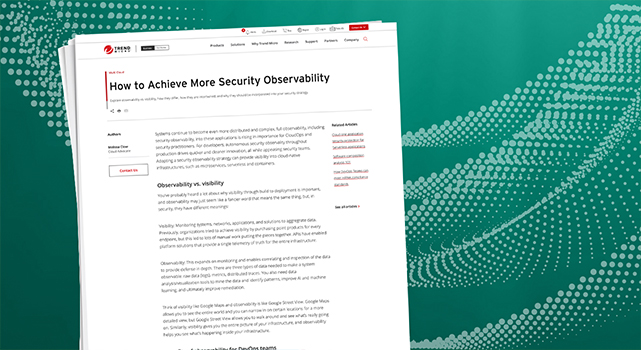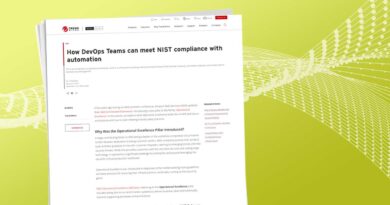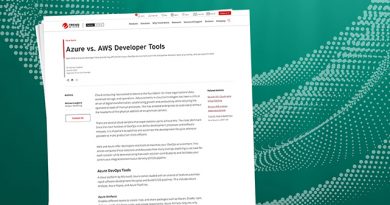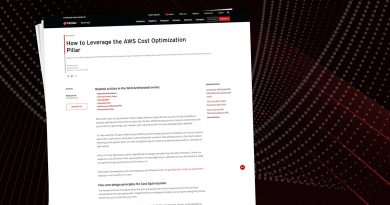Cloud-Native Security: More Security Observability Cloud Advocate


Systems continue to become even more distributed and complex, full observability, including security observability, into these applications is rising in importance for CloudOps and security practitioners. For developers, autonomous security observality throughout production drives quicker and cleaner innovation, all while appeasing security teams. Adopting a security observability strategy can provide visibility into cloud-native infrastructures, such as microservices, serverless and containers.
Observability vs. visibility
You’ve probably heard a lot about why visibility through build to deployment is important, and observability may just seem like a fancier word that means the same thing, but, in security, they have different meanings:
Visibility: Monitoring systems, networks, applications, and solutions to aggregrate data. Previously, organizations tried to achieve visibility by purchasing point products for every endpoint, but this led to lots of manual work putting the pieces together. APIs have enabled platform solutions that provide a single telemetry of truth for the entire infrastructure.
Observability: This expands on monitoring and enables correlating and inspection of the data to provide defense in depth. There are three types of data needed to make a system observable: raw data (logs), metrics, distributed traces. You also need data analysis/visualization tools to mine the data and identify patterns, improve AI and machine learning, and ultimately improve remediation.
Think of visibility like Google Maps and observability is like Google Street View. Google Maps allows you to see the entire world and you can narrow in on certain locations for a more detailed view, but Google Street View allows you to walk around and see what’s really going on. Similarily, visibility gives you the entire picture of your infrastructure, and observability helps you see what’s happening inside your infrastructure.
Benefits of observability for DevOps teams
Visibility and observability are intertwined—you cannot maximize security without incorporating both in your strategy. As a developer, you may shrug and think this isn’t your concern, but incorporating observability into your pipeline benefits you as well:
- Pre-production observability helps you start new projects with the cleanest code possible. Shifting security to the left allows you to make changes and fix potential issues before code enters production.
- Monitors the application itself while its running so you have a significantly more accurate picture of potentially malicious behaviour. Now you can see when and where things went awry and fix accordingly.
- Doesn’t disrupt development—integration with the pipeline makes testing part of your processes. With security teams no longer interrupting you to double check everything, you can build quickly and deploy with confidence.
- Fosters a DevOps culture, which is key to being prepared for anything. More collaboration means problems can be solved quicker, since everyone is in the know and on the same page.
How to implement observability
Like a security guard outside of a store, your goal is to stop threats before they can enter your system and wreak havoc. Shifting security left (pre-production), helps you stop the bad guys at the door so you can work effectively.
Trend Micro Cloud One has teamed up with New Relic to help cloud builders double down on their security observability posture. With this integration, you will complement your New Relic observability by adding visibility of your cloud security posture. Your cloud environment will be audited against hundreds of Amazon Web Services (AWS) and Microsoft Azure industry best practice checks to make your technology more reliable, secure, and cost efficient. All of this visibility is now embedded within your larger single-pane-of-glass observability view with New Relic.
Putting cloud operational excellence into practice
By using New Relic’s integration that enables our AWS and Azure customers to bring in their cloud service data, you will leverage New Relic’s rich search interface that can be used to create new dashboards and identify insights for your cloud services with a unified view. This can quickly be done with New Relic’s free tier or free 30-day trial of Trend Micro Cloud One.
This integration of Trend Micro Cloud One™ – Conformity with New Relic relies on Amazon SNS integration. With this integration, you will complement your AWS observability by adding in Conformity monitoring, now using your New Relic account. The integration is open sourced in New Relic’s GitHub repository and is packaged as an AWS solution using the serverless framework. After you’ve deployed Conformity to your Amazon Simple Storage Service (S3) buckets, the New Relic integration deploys a AWS CloudFormation stack in your account.
Building a business in the cloud requires a consistent set of rules to help provide guidelines for teams around the world as they deploy assets and create systems at any time. Leveraging the design principles of the AWS and Azure Well-Architected framework not only helps you avoid breaches, but also ensures you’re building successful cloud operations and governance practices for high-performing and efficient cloud infrastructure.
Learn more about this new exciting integration.
Read More HERE



